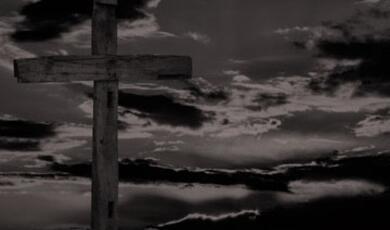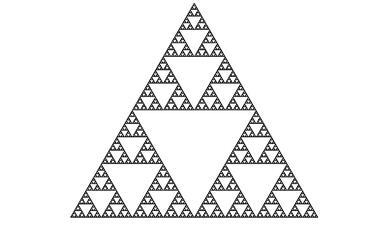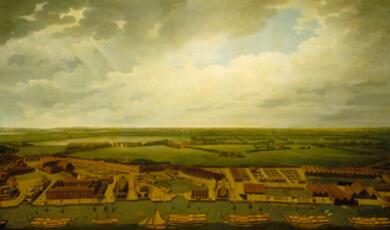'Le habit noir' - Men in Black
Share
- Details
- Text
- Audio
- Downloads
- Extra Reading
In 1863 Charles Baudelaire, wrote about the ‘Painter of Modern Life’ depicting the uniformity of male dress codes with its black suits, top hats and patent leather boots as having created ‘a cortege of undertakers’. Whereas women’s dress was constantly moving with the seasons and responding to passing styles, men’s dress appeared remarkably static and unadorned.
Drawing on the writings of Charles Baudelaire and Mallarmé and on the paintings of Constantin Guys and Edouard Manet, the lecture will examine the visual representation and cultural meanings of the habit noir. It will also consider the related British male types of the dandy and the swell. Were men in the nineteenth century really just a neutral backdrop to the ebb and flow of female fashion, or did men also engage in and explore sartorial style?
Download Text
6 November 2013 'Le habit noir' - Men in Black Professor Lynda Nead I’d like to welcome you all and thank you for coming to the first of this series of lectures on ‘Fashion, Art and Modernity in the Mid-Nineteenth Century.’ This subject is something of a new direction for the Gresham College Public Lectures. When Gresham College was established in 1597 under the will of Sir Thomas Gresham, its aim was to provide an education independent of the Universities of Oxford and Cambridge; a ‘new learning’ for the citizens of the City of London. Learning was organised in terms of the disciplines of the seven ancient Professorships: Astronomy, Divinity, Geometry, Law, Music, Physic and Rhetoric and the continuity of these fields can be seen in the subjects of lectures in the Gresham programme today. Sir Thomas didn’t avoid controversy or contemporary issues, in fact these might be seen as one of the objectives of his College. History of Art was, of course, not amongst those original subjects. Although Commerce has since been added to the portfolio, the ancient subject of Rhetoric has provided the umbrella for recent changes and developments in the Arts and Humanities. Perhaps inevitably, then, the visual arts have been a little neglected at Gresham and yet we live in a fiercely visual world; we are bombarded by images that tell us who we are, how we should behave and feel, and even what we should desire. Our work and our leisure time is increasingly dictated by visual signs and it is important that we think critically about how images work, how they created and continue to create meanings, both in the past and today. Although people have wondered and written about art, they have judged and celebrated it for centuries and for at least as long as the existence of Gresham College, this activity has, for the most part, been an amateur preoccupation, the preserve of collectors and connoisseurs. We can begin to speak of the History of Art as an academic discipline from the nineteenth century and its emergence within German universities as an attempt to see the development of art in its historical contexts and to understand the relationship of art to particular social and historical conditions. Today the History of Art is a relatively small discipline compared, for example, to History or English Studies, but it represents a significant form of expertise, which is the examination and analysis of visual representation in all its forms. It is also extremely interdisciplinary, that is, it draws on the materials and practices of other humanities disciplines in order to expand the way that it considers the visual image. So these lectures are presented in the spirit of the discipline as it exists in universities today. At their heart is a fascination with and a love of visual culture and a desire to know how images create meanings and values. The lectures will also engage with the visual arts in their broadest sense, embracing popular and mass produced forms of images, such as photography and caricature as well as the fine arts of painting or sculpture. On the whole, but not entirely, I will not be making judgements about whether images are good or not, but I will try and understand what lies behind their visual impact or effect. And in order to do this I will draw on other kinds of texts and contexts that enrich and in part account for why the images look the way they do. So having said something about my methodology, let’s move on to the subject of the lecture series, that is, ‘Men in Black and Women in Red: the Relationship between Fashion, Art and Modernity in the Nineteenth Century.’ In this series we will be looking at when and why masculine attire came to symbolise the manners and morals of modern urban life. SLIDE: WINTERHALTER, Empress Eugénie Surrounded by Her Ladies-in-Waiting, 1855 We will look at the photograph of an ageing empress and consider how fashion can hold within its layers memories and grief. SLIDE: W. P. FRITH, At Homburg 1869, 1870 We will uncover how artists used codes of dress to convey the moral meaning of their pictures; and we will consider the new styles of dress and manners adopted by young women in the nineteenth century and the ensuing confusion of traditional codes of respectability and non-respectability. The four lectures will examine the ways in which different aspects of fashionable dress were used to definine, celebrate and criticise modern life in the middle decades of the nineteenth century. Rather than regarding fashion as frivolous or self-indulgent, for a number of important writers in this period, the constant changes of fashion were a potent symbol of the speed and transitory nature of modern urban life. Clothes created new identities for the men and women of the great metropolises of the nineteenth century and my examples will focus on Paris and London and the art produced in these great centres of urban expansion and spectacle. I should probably explain the title of my lecture series and its reference to recent film culture. SLIDE: Woman in Red, dir. Gene Wilder, 1984, poster. Woman in Red was a romantic comedy directed by and starring Gene Wilder and which told the story of a man’s obsession with a fantasy woman in a red dress; the dress was a sign of her beauty, her sexuality and her danger. But the woman in red belongs to a much longer discourse about the moral symbolism of clothes and the meaning, in particular, of women dressed to display their sexuality; what might initially be seen as bold, can easily go on to be understood as meretricious or flaunting. We will be looking at these Victorian debates in the third lecture in the series. SLIDE: Men in Black, dir. Barry Sonnenfeld, 1997, poster. Men in Black is, of course, the title of an extremely successful franchise of science fiction comedies starring Tommy Lee Jones and Will Smith as two agents of a secret organization that polices extra-terrestrial life forms. Their identities are expressed in their signature costume of sharp black suits, white shirts, black ties and dark sunglasses. A different twist on the style of the black suit was created in Quentin Tarantino’s now classic 1992 film, Reservoir Dogs: SLIDE: Reservoir Dogs, dir. Quentin Tarantino, 1992, poster. It is the story of a jewellery heist that goes wrong and the subsequent fallout amongst the members of the gang whose aliases take the form of colours (Mr Blue, Mr Pink etc;) it is memorable for its stylish violence, the iconic look of the leading characters and, of course, for Quentin Tarantino’s dialogue. At one stage one of the gang questions the allocation of names: Mr Pink: What can’t we pick out our own color? Joe: I tried that once; it didn’t work. You get four guys fighting over who’s gonna be Mr Black. The question that this lecture addresses is when did it become cool to be Mr Black? When and why did the black suit come to represent a quintessential kind of urbane masculinity? SLIDE: Man’s suit, American, 1867-8. The subject of fashionable dress in the mid-nineteenth century needs to be placed in the context of a number of key developments in the period. Major cities such as Paris and London began to sweep away their ancient streets and buildings and to remodel the urban fabric in order to suit the size and needs of a modern imperial metropolis. New forms of leisure and retailing such as the department store began to appear, selling up to the minute designs created by the ready-made clothing industry. Moreover, these styles, with their seasonal looks were promoted and advertised through a proliferating number of fashion magazines, with their regular full-page plates of the latest men’s and women’s fashions. SLIDE: Man’s fashion plate, Gentleman’s Magazine, 1873. Up until the last two or three decades, most histories of nineteenth-century fashion tended to focus on the development of women’s clothing in this period, where styles were most obviously decorative and flamboyant and subject to seasonal change. Since the 1990s, however, cultural historians such as Christopher Breward and John Harvey have turned to the appearance and meaning of men’s clothing and the ways in which, through subtle details and changes, it was able to express the essential nature of modern life. If women were the colourful and ornamental consumers of modern fashion, then men seemed to constitute the neutral dark background to their display of conspicuous consumption. If men in previous centuries had worn breeches to show off the curves of their calves, elegantly decorated and textured jackets and elaborate wigs and hats, then in the nineteenth century they went into uniform mourning. As John Harvey puts it: [From the 1830s] men’s dress became steadily more austere and more dark, and if one consults the fashion journals one can see colour die, garment by garment, in a very few years. (p. 23) Both day and evening clothes became darker and plainer, more symmetrical and straight, and with the reduction of ornamentation and colour, cut became the objective of tailoring. Although checks and pinstripes could be used for more casual trousers, the tendency in male clothes was towards darker colours and concealment. With limited seasonal change or variation, details such as length of lapel, shape of shirt collars, style of cravats and tie pins became expressive symbols of individual taste. This gradual abandoning of individuality and narrowing and darkening of masculine clothing has been understood as the appropriate costume for a new professional and patriarchal class that emerged in the middle of the nineteenth century, for whom the black business suit was a symbol of their power and authority. As early as 1930, in his classic study of The Psychology of Clothes, J. C. Flügel identified the end of the eighteenth century and the overthrow of the ancien regime as the moment when men relinquished their interest in sartorial display and withdrew into a world of austere tailoring and the values of ‘appropriate’ or ‘correct’ dress; in other words, a world of social codes rather than fashion codes. While Flügel’s concept of what he called ‘The Great Masculine Renunciation’, clearly has some truth in it, it doesn’t really describe the more subtle language of men’s clothing after the eighteenth century, or what lay behind the signs of colour, or cut and texture that were clearly valued by men in this period. The black suit undoubtedly expressed the identity of middle-class professional men and the basic elements of the habit noir might have been relatively stable but this did not prevent men from playing with the details and expressing other aspects of their identity than those of self-discipline and authority. Moreover, fashion is embodied practice, that is, it is worn by individuals who give it movement and life and the meaning of the black suit was not, as we shall see, simply a question of a frozen look, but was a way of moving and standing; it involved a gait, a bearing, that also spoke of the moment and its manners. SLIDE: Man’s fashion plate, Le Follet, 1840. By the middle of the century the black suit had become the preferred fashion for the contemporary man in Paris and London. During this period both cities were undergoing massive transformations in their organisation and appearance. SLIDE: ‘Decoration of the Boulevard Malesherbes on Inauguration Day, 1861’. In Paris, the heart of the old medieval city was being demolished in order to create a new commercial capital. Under the direction of the Prefect of the Seine, Baron Haussmann, the old districts and narrow streets gave way to a network of boulevards and avenues, a combination of aesthetic and strategic requirements that both eased the flow of traffic and the movement of troops, and created spectacular vistas down straight tree-lined avenues. This was the ‘capital of the nineteenth century’; with its elegant apartments, its expensive stores and smart cafés. SLIDE: JOHN O’CONNOR, The Embankment, 1874, Museum of London. In London, too, the creation of the Metropolitan Board of Works was intended to coordinate a number of projects for the modernisation and improvement of the city. And whilst commentators acknowledged that these processes were more piecemeal and haphazard than the centralised remodelling of Paris under the regime of the Emperor Louis-Napoleon, this, they argued, was because they were the achievements of a democratic government, rather than the vainglorious monuments of a despot. In spite of their different approaches to urban improvement, the point is this, both Paris and London were undergoing processes of modernisation that were changing the appearance of the cities and their spaces. These were the capitals of great empires and trading nations and were thus significantly different, both in terms of scale and appearance, from how they had been in the eighteenth century. This new urban environment produced an especially urgent and vivid sense that it was also the backdrop for a new society, a new style of behaviour and looks that needed to be captured in writing and in art. By the 1840s a group of avant-garde writers in France were expressing the view that fashion was the purest expression of the qualities of la vie moderne. For the art critic and poet Charles Baudelaire what differentiated contemporary life from all other periods was its pace and rhythm; its scenes and encounters were transitory and fragmentary and its beauty was different from that which had gone before. And yet, within this kaleidoscopic world of fleeting and chance encounters there was a kind of eternal truth and epic beauty and it was the responsibility of modern artists to engage with contemporary motifs in order to capture both the ephemeral and the timeless qualities of modern life. In his review of the Salon exhibition of 1845, Baudelaire regretted the use of historical subjects by modern French painters and insisted: No one is cocking his ear to tomorrow’s wind, and yet the heroism of modern life surrounds us and presses upon us…There is no lack of subjects …to make epics. The painter, the true painter for whom we are looking, will be he who can snatch its epic quality from the life to today and can make us see and understand, with brush or with pencil, how great and poetic we are in our cravats and patent-leather boots. Baudelaire and other writers in this period understood that there was symbolic significance in the clothing of the age and saw fashion as the way in which the particular nature of modern life could be comprehended. And its most eloquent elements are its details, there is a brutal clarity and a profound irony in Baudelaire’s observation of ‘how great and poetic we are in our cravats and patent-leather boots.’ And what an eye for detail, what a passion for the minutiae of men’s clothing and bearing. In his Salon review the following year Baudelaire again took up the theme of male dress and modernity; referring to it as the garb of the ‘modern hero’ he continued: …has not this much-abused garb its own beauty and its native charm? Is it not the necessary garb of our suffering age, which bears the symbol of a perpetual mourning even upon its thin black shoulders?...the dress-coat and the frock-coat not only possess their political beauty, which is an expression of universal equality, but also their poetic beauty, which is an expression of the public soul – an immense cortege of undertaker’s mutes (mutes in love, political mutes, bourgeois mutes). We are each of us celebrating some funeral. The black suit has become an expression of equality and democracy, the clothing of a post-Revolutionary bourgeois class, and it is also the garb of a collective and poetic mourning that has turned the whole of society into a crowd of undertakers’ mutes. Baudelaire’s famous essay, ‘The Painter of Modern Life’ was conceived between 1859 and 1861 and published in instalments in 1863 in the French newspaper Le Figaro. Here, he expanded on the themes that he had set out in his Salon reviews and referred to a contemporary artist, Monsieur G., who he described as the painter of modern life. SLIDE: CONSTANTIN GUYS, Meeting in the Park, c.1860 Baudelaire was referring here to Constantin Guys, a graphic artist who worked for the new illustrated press, supplying images of contemporary life in the new spaces of Baron Haussmann’s Paris. For Baudelaire, Guys’s style of execution and sketchy finish was exactly tuned to the subjects of his art and in his eye for detail and the eloquent line he captured the poetic and tragic styles of contemporary men and women. SLIDE: CONSTANTIN GUYS, Greetings in the Bois de Boulogne, c.1860 For Baudelaire, the ‘last spark of heroism’, the final expression of individuality within the uniformity of modern life, was the dandy, a type of masculinity based on privilege, appearance and an exquisite refinement of manners. In his illustrations Guys had captured the poetic modernity of the dandy, as Baudelaire puts it: …his lightness of step, his social aplomb, the simplicity of his air of authority, his way of wearing a coat or riding a horse, his bodily attitudes which are always relaxed but betray an inner energy. In this writing we begin to arrive at the symbolic meaning of le habit noir and its reworking in the costume of the dandy. It is a manipulation of codes to express a kind of last ditch individualism, a fetishisation of detail and attitude that betrays a neurotic nervous energy. Baudelaire’s choice of Constantin Guys as the painter of modern life might be seen as surprising, with Edouard Manet a much more obvious candidate for the title. Indeed, many of Manet’s subjects can be related to Baudelaire’s idea of modernity and according to many of his contemporaries, Manet himself was something of a dandy. SLIDE: FANTIN-LATOUR, Edouard Manet, 1867. In Henri Fantin-Latour’s 1867 portrait, Manet is the epitome of masculine elegance. His top hat is on the showy side of contemporary norms and the details of his blue cravat, fitted waistcoat and gold watch chain, his finely tailored frock coat, leather gloves and cane show him to be an impeccable interpreter of contemporary male fashion. Visiting Paris from London, the artist George Moore commented on Manet’s stylishness: …he had his own physiognomy and his manners something that made him resemble an Englishman. Perhaps it was his clothes – his outfits with their elegant cut – and his way of carrying himself…those square shoulders swinging from side to side when he crossed the room, and his slender waist, and that face, that nose, that mouth. Moore’s remarks evoke Manet’s elegance and the powerful physicality of his style, but note also that Moore sees this kind of masculinity as English. The figure of the dandy was essentially an English export to France. SLIDE: ROBERT DIGHTON, George Beau Brummell, print, 1805. At the turn of the nineteenth century Beau Brummell epitomised a kind of cult of the self, displayed in the exquisite taste, self-indulgence and languid manners associated with dandyism. According to anecdote, Brummell could spend the whole morning tying his cravat to his satisfaction and every detail of the 1805 portrait – the turned out toes and polished riding boots, the nonchalant pose and curled hair – testifies to the apotheosis of his sense of taste. The image of the English dandy was taken up in France in the 1820s and the distinction and superiority of English style and tailoring and, in particular, the elegance of the black evening dress, was widely acknowledged. SLIDE: Man’s fashion plate, Gentleman’s Magazine, 1872. So by the middle of the nineteenth century, men in black were a poetic symbol of the equality and suffering of modern life, they were figures of power and authority, and were also the last sparks of heroism and individuality in an age characterised by boredom and indifference. This is the long history of images and debates that Quentin Tarantino draws on in Reservoir Dogs when his character observes that all the men want to be Mr Black. Men in black appear frequently in Manet’s paintings of modern Parisian life. SLIDE: MANET, Music in the Tuileries Gardens, 1862. Music in the Tuileries Gardens (1862) is a portrait of fashionable life in a formal park in Haussmann’s Paris. Including a number of portraits of Manet’s circle SLIDE: MANET, Music in the Tuileries Gardens / R.A. key to the painting. In this key to the painting produced for the recent exhibition of Manet’s portraits at the Royal Academy of Arts, you can see Manet himself on the extreme left of the canvas, with the distinctive profile of Baudelaire at no. 10 and Fantin-Latour at no. 8, along with many other writers, artists and musicians. This is boulevard society, a modern subject and a modern style in which academic conventions of composition and perspective have been abandoned and where the finish the painting is sacrificed to a sketchy, bold treatment that emulates in oil the drawing style of Guys. The black frock coats and top hats punctuate the canvas and give the fashionable crowd a kind of rhythm. It is an image that captures both the ephemeral, surface beauty of modern life and its epic and historical significance. SLIDE: MANET, The Masked Ball at the Opera, 1878. In the later painting The Masked Ball at the Opera, the dominance of the habit noir and its contrast to female attire (or lack of it) is even more arresting. The radical composition, with its figures cut brutally by the edges of the canvas and the challenging subject matter of sexual commerce, the business of pleasure, at a fancy dress costume at the Opera, resulted in the picture being rejected by the Salon jury. As in the earlier painting, the canvas is punctuated by the darks and blacks of the male clothing, but whereas in the Tuileries Gardens the men conversed in polite groups and with bourgeois women, here the closely knit groups flirt and touch, they exchange notes and knowing glances. In the writing of Baudelaire and the art of Guys and Manet we can begin to see how the black suit of the nineteenth-century gentleman became a sign of modernity and a narrative trope, able to convey a complex range of identities and social relationships, but let’s now trace the footsteps of the dandy back to Britain and see how the image of the man in black developed there. As we’ve already seen the figure of the dandy was an English export and the reputation of the excellence of English tailoring remained throughout the nineteenth century. Back at home, the image of the dandy morphed in the middle of the nineteenth century into the figure of the swell; a much more flamboyant type of masculinity than the funereal dark suited man of the professional classes, the swell was flashy and vain, the butt of humour but also, as we shall see, a figure of sexual threat. The swell played with and expanded the repertoire of the black suit. If checks were permissible then the swell worked big checks, if scarves were allowed then the swell wore them bigger and more elaborately, and if top hats were tall then the swell set his at a jaunty angle that enhanced the swagger of his walk. The swell explored the limits of men’s fashion in the mid-nineteenth century and was part of what might be called a moral discourse of clothing that we will see surface repeatedly throughout this series of lectures. Perhaps the best way to get to know the swell is through the pages of Punch magazine and the images of one of its finest cartoonists, John Leech. As we’ll see also in the second lecture in this series, fashion and its vagaries were a favourite subject for the readers of humorous magazines and cartoons can be a very helpful, if complex, form of historical evidence; they indicate a shared perception of the subject (humour depends necessarily on a degree of consensus) and reveal the particular details or elements that represent the bigger issues and debates. So let’s have a look at the swell in one of his earliest appearances on the pages of Punch. SLIDE: JOHN LEECH, ‘A Most Alarming Swelling’, Punch, 11 May 1850, p. 184. In ‘A Most Alarming Swelling’, published in May 1850, a chorus line of fashionable swells appear to sashay down a fashionable street. The same disdainful expression and nonchalant pose is repeated in the four figures. Pose is as much a marker of the swell as his clothes and here he appears to favour large checks and expansive neckties in flamboyant bows. They are arrogant (swelled up) and ridiculous. SLIDE: JOHN LEECH, ‘Did you call the police…’, Punch, 5 February 1853, p. 58. If details of clothing, deportment and gesture expose the ludicrous self-indulgence of this hero of modern life, then on the pages of Punch speech is the ultimate giveaway. In the cartoon from February 1853, a swell in a tight-fitting frock coat and with a high stiff collar and magnificent sideburns stands stiffly in the street. The caption reads: Officer 42: ‘Did you call the police, sir?’ Swell (who would rather perish than disturb his shirt-collar) ‘Ya-as, a-I’ve had the misfortune to dwop my umbrella, and there isn’t a boy within a mile to pick it up-a-will you have the goodness?’ The swell’s affected lisping drawl epitomises the extremes to which he takes his fashionability – we must assume that since the swell was cropping up regularly in Punch by the early-1850s, it was a type that was already recognisable to its readers and then elaborated and established as a stereotype through its repetition. SLIDE: JOHN LEECH, ‘In A Very Bad Way’, Punch, 31 December 1853. In ‘In A Very Bad Way’ the poor swell is so despondent that he doesn’t even care how his ‘twowsers’ are made. Note the wide-legged stance of the swell in his smoking-jacket and note also the abandoned top hat and gloves in the foreground, we’ll something like that again in a few minutes, but in a painting exhibited at the Royal Academy of Arts. The individual elements of fashion are beautifully revealed in Leech’s cartoon ‘Taste’, also published in 1853. SLIDE: JOHN LEECH, ‘Taste’, Punch, 23 April 1853, p. 168. Two heavy swells discuss their dress: ‘That’s a stunning pin, Frank.’ ‘Ya-as – I’ve got a set of waistcoat buttons to match- look jolly at night – I assure yah!’ Every little detail of this wonderful image tells us about the swell and his superficial manners and morals. But in this cartoon, I think we begin to detect something a bit more sinister in the figure of the swell and his dark hat and suit. The pin that they are admiring is a skull that stands quite proud of his cravat; with a full set of matching buttons these are ornaments that look best at night, when the swell comes into his own. Remember these ornaments, again we will see something similar later, but in a much more threatening context. The snorting, drawling over-dressed swell is clearly a type of aristocratic masculinity, but there were evidently cheaper, lower-class versions. SLIDE: JOHN LEECH, ‘The Moustache Movement’, Punch, 21 January 1854, p. 30. In a Leech cartoon from 1854 two phoney, working-class swells imitate the fashion and, in this case, rather more elegant style of the genuine upper-class swells behind them, one congratulates the other ‘The gals can’t tell hus from them, now!’ It is interesting that in the sexist and class-ist (if there is such a word) pages of Punch in the nineteenth century, even the swell gets off more easily when the butt of the joke is the working classes. The swell was most at home in the new leisure spaces of the Victorian city. Cremorne Gardens was an open-air resort, located in Chelsea, on a site stretching from the King’s road to the River Thames. SLIDE: Playbill advertising ‘Cremorne Gardens Open Daily’, c. 1850. Boasting a wide range of attractions from a bowling saloon and grotto to gardens and a firework temple, Cremorne really came into its own at night, when the gardens were lit by thousands of gas lights and the crowds gathered round the Chinese dancing platform. People went to Cremorne to look and to be looked at, to dance and to pose, to touch and to flirt. The circular dancing platform was the arena where some of these social manoeuvres and exchanges were played out, and all for the cost of one shilling entrance charge. The drunken swell is one of the stock metropolitan types of Cremorne. SLIDE: ALFRED CONCANEN, music sheet cover The Cremorne Polka, c.1862. For the moralists who campaigned for the closure of Cremorne Gardens it was the behaviour of the swells that was most alarming. The issue came to a climax in 1863, when there was a riot on the night of the famous horse race, the Oaks. A group of young gentlemen stormed and wrecked one of the bars near the dancing platform and a number were caught and prosecuted. A long court case followed and was reported in the press, and finally the jury found all the men guilty of riotous behaviour. The illustrated cover of the music to the Cremorne Polka is a celebration of the Cremorne swell. Three fashionably dressed men link arms and, with their backs turned to the platform, perform an elegant, drunken saunter towards the louche, bearded gentleman seated on the right. They seem involved in their own self-conscious display, with their dress and behaviour as much a part of the spectacle as the dancers in the crystal circle. There is a fascinating synergy between the swell and Cremorne, this is a different version of masculinity purpose built for the new spaces of modern leisure. On the pages of Punch and the lithographs on music sheet covers the swell was an oafish figure of fun, confident and assertive but easily dismissed; there is, however, a different side to the swell that is altogether more unpleasant. SLIDE: W. H. HUNT, The Awakening Conscience, 1854. The Awakening Conscience by the Pre-Raphaelite artist William Holman Hunt depicts a kept woman and her lover in a modern interior. Designed as a contemporary pendant to Hunt’s image of Christ called The Light of the World, it is a modern moral subject in which every detail conveys a symbolic meaning. As the man idly plays the piano, a tune reminds the fallen woman of her former purity and, as her conscience is awakened, she rises from where she has been seated on his lap and looks out to the Edenic garden reflected in the mirror behind her. I will discuss this picture in more detail in the third lecture in this series, for now I want simply to point to the top hat on the polished rosewood table and the discarded glove on the floor. We have seen these cast-off accessories before in John Leech’s cartoon of the swell ‘In A Very Bad Way’; here, however, the swell’s indifference takes on a different meaning as the glove becomes a symbol of his offhand treatment of his young mistress. SLIDE: E. C. BARNES, The Seducer, c.1856 In E. C. Barnes’s The Seducer, painted within a few years of The Awakening Conscience, the subject has moved to the bleak streets of the city, which are the backdrop for an encounter between a sharply dressed swell and a young milliner’s apprentice (her occupation is indicated by the hat box that she carries in her hand). A notice on the wall advertises ‘La Traviata’ and the word ‘Lost’ can be read on another poster; the sexual danger threatening this woman is made absolutely clear. The dark figure of the seducer looms over the slight body of the young milliner; his left leg envelopes her body as he presses his offer of assistance and ignores her refusals. SLIDE: E. C. BARNES, The Seducer / JOHN LEECH, ‘Taste’, 1853. Recall now John Leech’s satire of swell taste in which one swell admires the modish skull-shaped tie pin that looks so ‘jolly at night’. In Barnes’s image the seducer’s tailored suit is embellished with a tie pin in the form of a skull, a cane that has a metal serpent coiled around its handle and a cut lily-of-the-valley stuck in his button hole. If Leech’s cartoon implied the predatory behaviour of the swell, in Barnes’s painting the sexual harassment is made explicit. SLIDE: CHARLES HUNT, The Coffee Stall Westminster, c.1860, The Museum of London. In the final example (and there are many more that I don’t have time to show you) the setting is again outside in the city, with the vulnerable milliner’s apprentice pausing for refreshment at a street coffee stall on her journey to deliver a hat. The foreground of the picture is dominated by the dark silhouette of a heavy swell dressed in check trousers and with a scarf fashionably knotted at the back of his coat. The concern of the faces of the working people at the stall clearly indicate the threat that the man poses to the woman; his style and fashionability have become signs of his deviant and aggressive masculinity and his vanity a symbol of his indifference to others. Looking at these examples of mid-nineteenth century British genre painting, it is possible to see how the habit noir shifted its meaning: it was a sign of respectability and a symbol of the politics and poetics of modern life; an image of self-indulgent and oafish vanity, and to a figure of threatening and predatory male sexuality. As Thomas Carlyle had argued in his 1836 novel, Sartor Resartus, cultures express themselves through fashion and it is clear that men’s suits articulated a wide range of themes and values during the middle of the nineteenth century. ‘You get four guys fighting over who’s gonna be Mr Black.’ At the end of this lecture, I hope that the dialogue from Reservoir Dogs has taken on a greater resonance and meaning. To be Mr Black was to be the latest manifestation of a discourse on what it is to be a modern man that started at the beginning of the nineteenth century and that continues today. © Professor Lynda Nead 2013
This event was on Wed, 06 Nov 2013
Support Gresham
Gresham College has offered an outstanding education to the public free of charge for over 400 years. Today, Gresham College plays an important role in fostering a love of learning and a greater understanding of ourselves and the world around us. Your donation will help to widen our reach and to broaden our audience, allowing more people to benefit from a high-quality education from some of the brightest minds.


 Login
Login







